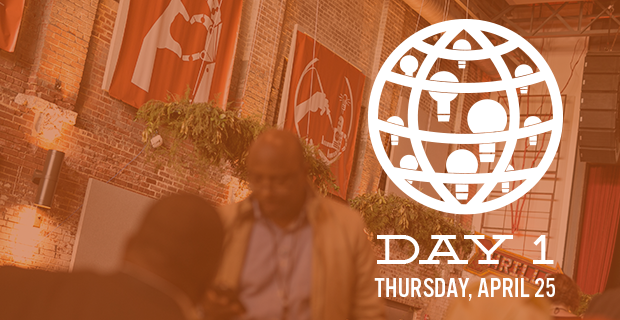Where We Work
See our interactive map



It takes tenacity to work in global health and development. These folks have it.
I’m going to go out on a limb and guess that if you work in global health or international development, you might know what frustration feels like.
Maybe the project funding cycle gets you down. Maybe you’ve struggled with a public policy that hurts more people than it helps. It could be that you’ve grappled with shoddy data sets, or corrupt officials, or the fickle winds of politics that so often blow our efforts off course.
You need tenacity to do this work.
You might’ve gotten so frustrated at how tough doing good can be that you—like DAI fragile states expert Tine Knott—have wanted to quit.
“There are days when I think about walking away to become a fitness coach for the LA Lakers,” Knott said today from the mainstage at SwitchPoint 2019. “But I don’t. Because this is meaningful work. It fundamentally changes things for the people who are most vulnerable. But it’s hard and it’s stressful. You need tenacity to do this work.”
Tenacity. That’s what a crowd of almost 400 global health experts, technologists, and humanitarians from a variety of fields are here to talk about this week at the eighth annual SwitchPoint conference in Saxapahaw, North Carolina. Inventors, clinicians, artists, and others from around the world come here year after year to learn about the latest humanitarian innovations and find new partners for social good ventures.
Knott’s not alone in her frustration.
Hawa Talla, head of IntraHealth International’s work on the Challenge Initiative in Senegal, felt it when 15-year-old Oumy walked into her clinic, pregnant and kicked out of her home because her parents didn’t want people to know. It’s a story frontline health workers in West Africa hear all too often. In fact, the Guttmacher Institute reports, some 31% of pregnancies in Senegal are unintended.
“But with tenacity,” Talla said today, “we can change the story and the lives of many young girls in Senegal and around the world.”
Brian Gitta felt frustration, too, when the prototype of his new malaria diagnostic kit didn’t work.
“We’ve seen so much progress in the medicines available to treat malaria,” Gitta said today. “But we haven’t seen the same progress in diagnosing it.” He knew his idea for a rapid diagnostic tool could transform the process of malaria diagnosis in Uganda and beyond. So when his first try wasn’t giving accurate results, he reengineered it.
Now his company, Matibabu, is producing a kit that gives an accurate diagnosis in just two minutes. This means parents who bring sick kids to the clinic for possible malaria don’t have to wait for hours while overworked health workers examine blood samples under a microscope. Matibabu’s rapid early detection cuts down on the amount of medication a client will need, the duration of their treatment, and ultimately the number of people who experience severe infections.
And maybe all of us, regardless of where we live or what work we do, have been frustrated when when we go searching for details on a symptom or ailment, and we don’t understand what we find. Health messages that are accurate and reliable are too often confusing, complex, or full of jargon the public doesn’t recognize.
Misinfodemics are a huge threat to public health.
“When end users encounter information they don’t understand, they’re not going to stop there,” said Nat Gyenes today. “They will find health information they can understand—but it might not be correct. Because they’re going to look to other sources, like memes and social media, where they’re likely to find short, emotional messages that are easier to understand. They’ll find them on Pinterest or Reddit or Twitter or Facebook. Public health communicators need to take these sources seriously.”
Misinformation—and what Gyenes calls misinfodemics—are a huge threat to public health. The spread of inaccurate health messages has caused deaths during Ebola outbreaks, tooth decay and mass hospitalizations in Australia, and outbreaks of vaccine-preventable diseases such as measles in New York. A new project at Meedan called Path aims to change this by improving information quality, access, diversity, and representation in health data infrastructure.
Without failure and frustration, successes like the ones we heard about today aren’t possible. Only by putting our frustration aside can we eventually improve health and well-being—for us all, for good.
Also read: SwitchPoint 2019: Day 2.
Follow what’s happening at SwitchPoint 2019 and join the conversation: @SwitchPointIdea @intrahealth #SwitchPoint Instagram
SwitchPoint is produced by IntraHealth International.
Want to know what happened last year at SwitchPoint? Check it out:
Also read: When Time Is Critical: How Involving Frontline Health Workers Can Improve Stroke Survival Rates
Get the latest updates from the blog and eNews




